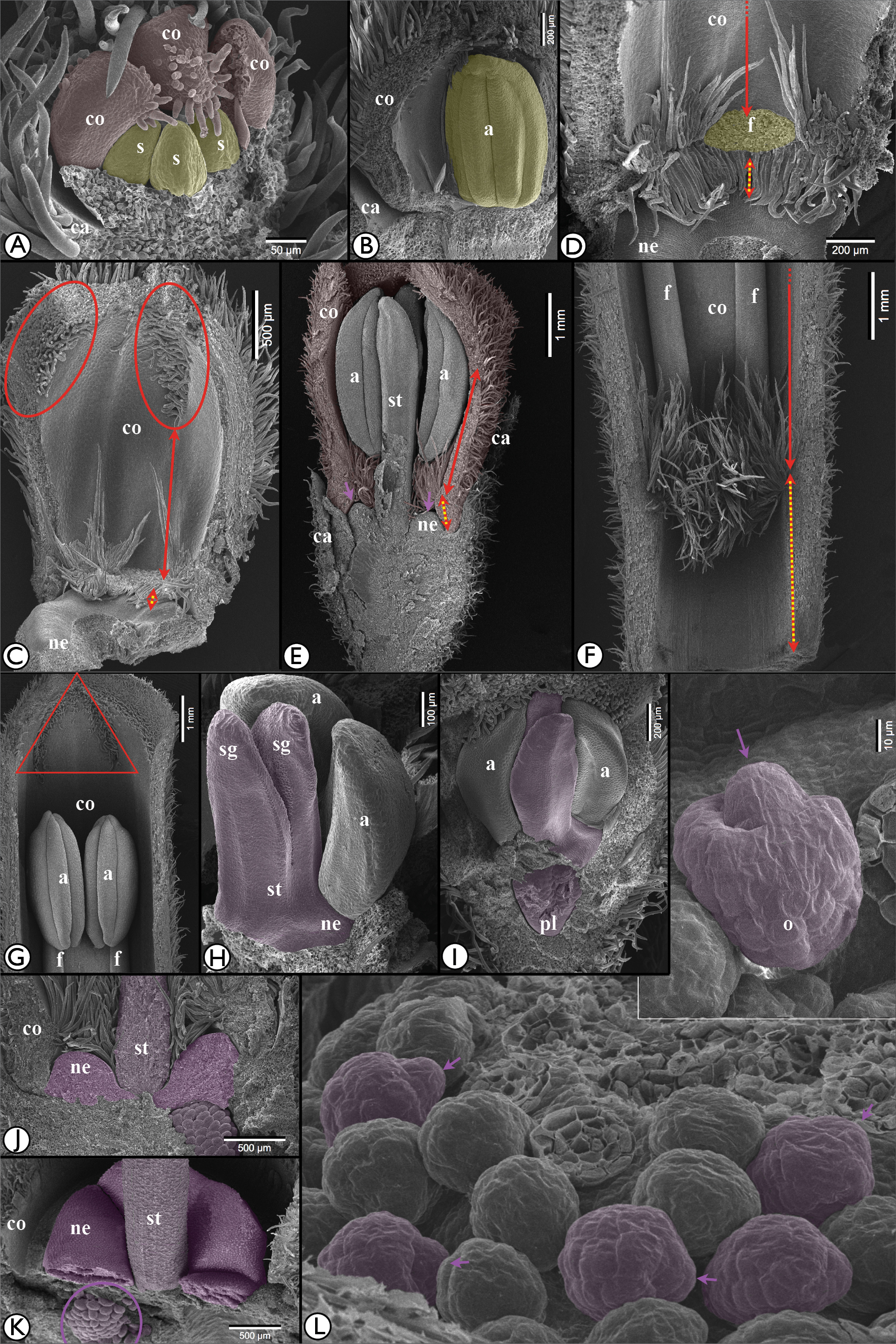
|
||
|
SEM images of stages of the floral development in Pogonopus exsertus. A–L: lateral views. A. Longitudinally opened developing flower. B. Tetrasporangiate introrse anther on short (invisible) filament. C. Adaxial view of part of tubular corolla; encircled in red, the haired rims of adherent corolla lobes. Proximally, a ‘whorl’ of hairs between stamen-corolla tube and corolla tube sensu stricto. D–E. Scar of filament at adhesion point of an epipetalous stamen at the tubular corolla. Below the scar, the stamen-corolla tube grows faster than the corolla tube sensu stricto above the scar. E. Longitudinal section of developing flower. An annular nectary (purple arrows) developing at the base of a single style with two stigma branches. F–G. Adaxial view of part of a semi-mature tubular corolla with two out of five epipetalous stamens. F. Proximal part. G. Distal part; the corolla lobes (one indicated by red triangle) with hairy margins. H–L. Development of the gynoecium. H. Developing single style with two style branches. I. Same stage, longitudinally opened flower with opened locule with U-shaped placenta. J–K. Successive stage with developing annular nectary surrounding the style base. Below the nectary, at right hand side, developing ovules. K. Idem from more apical view. Developing ovules encircled in purple. L. Developing ovules, detail of unitegmic ovule in frame. Obviously unitegmic ones indicated by purple arrowheads. Colour code: purple, gynoecium; red, corolla; yellow, androecium. Symbols: a, anther; ca, calyx (lobe); co, corolla (lobe); f, filament (scar of); ne, nectary; o, ovule; pl, placenta; s, stamen; sg, stigma; st, style; red double arrow, corolla tube sensu stricto; red-yellow double arrow, stamen-corolla tube. |